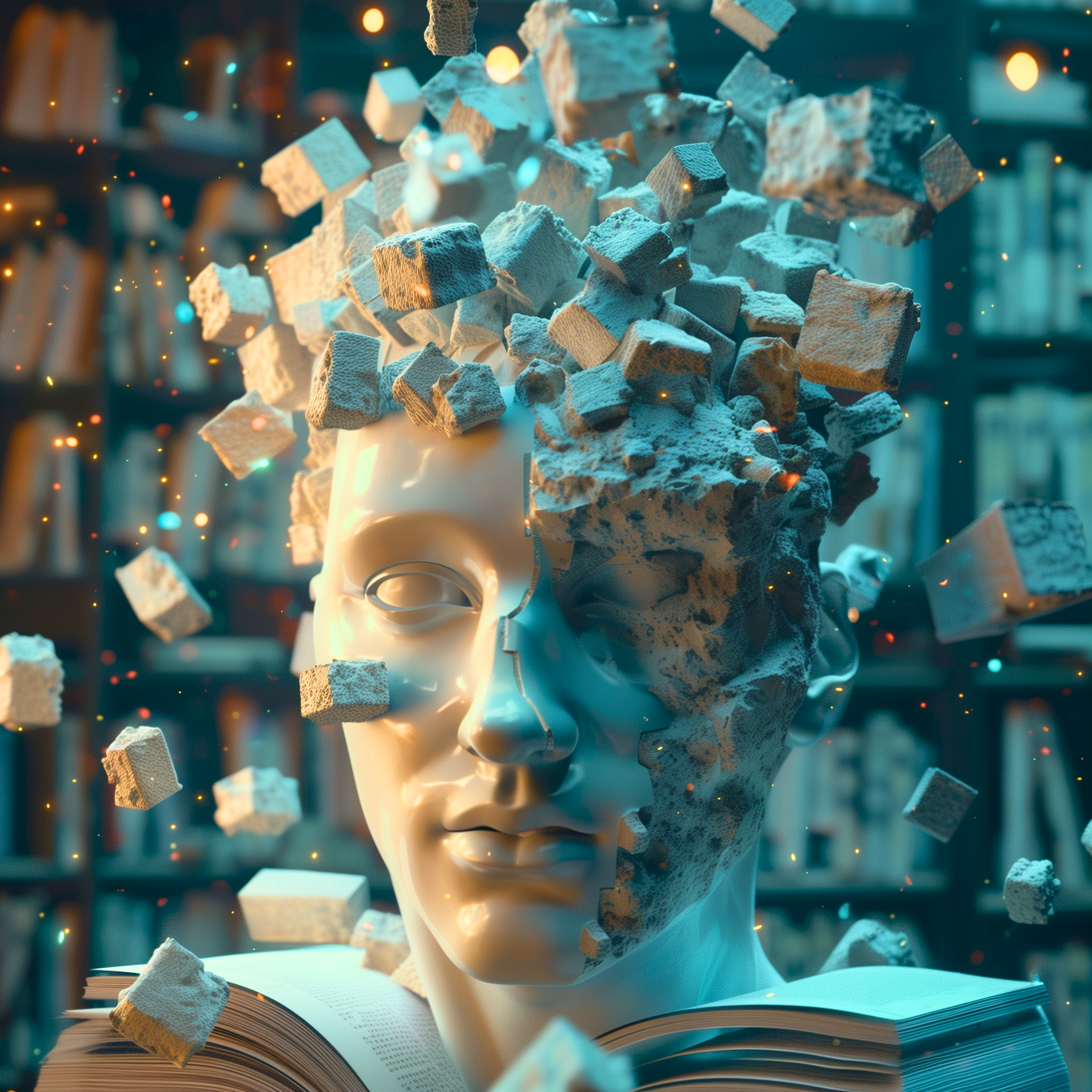Navigating AI's Illusions in Content Creation with Beat Ipsum’s Insights
AI Depiction of a Porcelain Sculpture of a Head Exploding by RobertAnthonyProductions.Com
In An Era Where Artificial Intelligence Seamlessly Blends
In an era where artificial intelligence (AI) seamlessly blends with human creativity, distinguishing between human-generated and AI-generated content has become a paramount concern. This exploration delves into the realms of AI content detection and the intriguing phenomenon of AI hallucinations, shedding light on their implications for the integrity of information and the ethical challenges they pose.
AI Content Detection: A Critical Overview
The development of AI detection software, such as GPTZero, marks a significant advancement in our ability to discern the origins of digital content. These tools, designed to detect whether content has been generated by AI, play a crucial role in academic and professional settings, aiming to uphold the authenticity of work and combat plagiarism. Despite their noble intentions, the reliability of these detection tools has been a subject of intense debate. A pivotal study conducted by Weber-Wulff et al. in 2023 evaluated 14 detection tools, including Turnitin and GPT Zero, revealing a concerning fact: all tools scored below 80% accuracy, with only five surpassing the 70% mark.
This revelation underscores the challenges in accurately identifying AI-generated content, with significant implications for maintaining academic integrity and the broader landscape of content creation. Instances of false positives, where human-generated work is misclassified as AI-produced, highlight the limitations and potential biases inherent in these technologies.
The Enigma of AI Hallucinations
AI hallucinations—instances where AI systems generate content that is plausible yet unfounded—pose another layer of complexity. Unlike human hallucinations, which are perceptual, AI hallucinations manifest as unfounded assertions, revealing the limitations of AI models in distinguishing fact from fiction. This phenomenon has gained prominence with the widespread adoption of large language models like ChatGPT, which, despite their sophistication, often embed random falsehoods within their outputs.
AI hallucinations present significant challenges, particularly in contexts where accuracy and reliability are paramount. The potential for misinformation and the ethical implications of deploying AI in sensitive domains necessitate a careful reconsideration of how we engage with and regulate AI-generated content.
Ethical Considerations and the Path Forward
The dual challenges of AI content detection and hallucinations present a complex ethical landscape. Enhancing the accuracy and reliability of detection tools is paramount, as is developing mechanisms to mitigate the occurrence of hallucinations. Moreover, the establishment of ethical guidelines governing the use of AI in content creation is critical. Such efforts should prioritize transparency, accountability, and fairness, ensuring that AI technologies serve the public good while respecting the principles of human creativity and intellectual property.
As We Navigate the Complexities
As we navigate the complexities of the digital age, marked by the rise of AI in content creation and detection, it is imperative that we engage with the ethical implications of these technologies. The balance between leveraging AI's potential for innovation and safeguarding against its pitfalls will be crucial in shaping the future of digital content. Ensuring the accuracy, reliability, and ethical use of AI-generated content remains a paramount concern as we strive to maintain the integrity of information in an increasingly digital world.
References
"Artificial intelligence content detection." Wikipedia, The Free Encyclopedia.
"Hallucination (artificial intelligence)." Wikipedia, The Free Encyclopedia.
